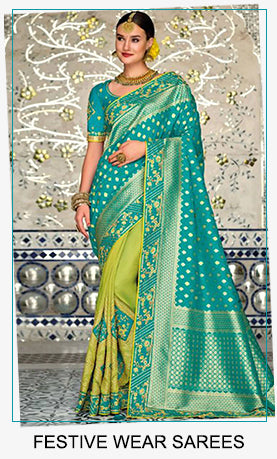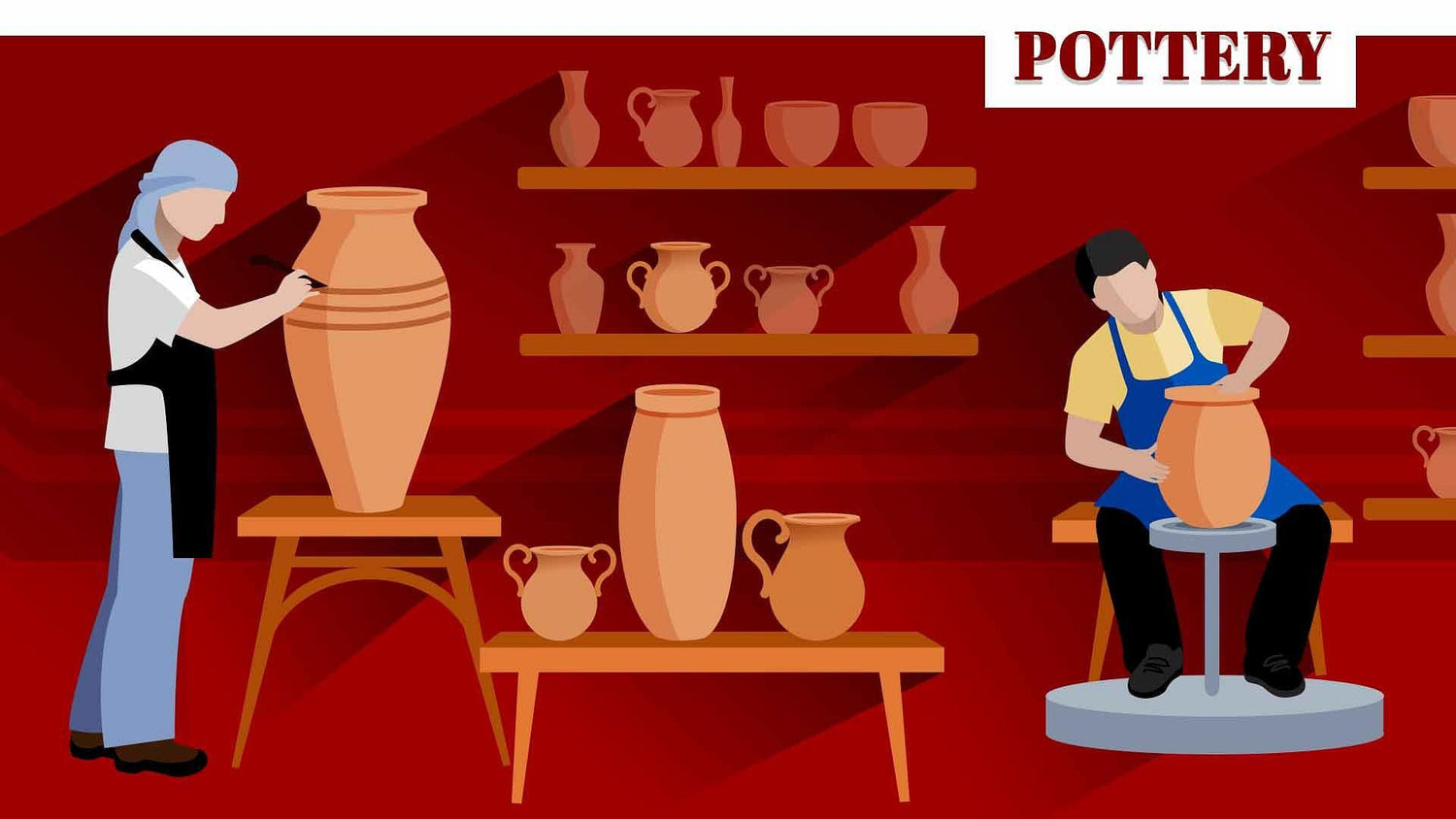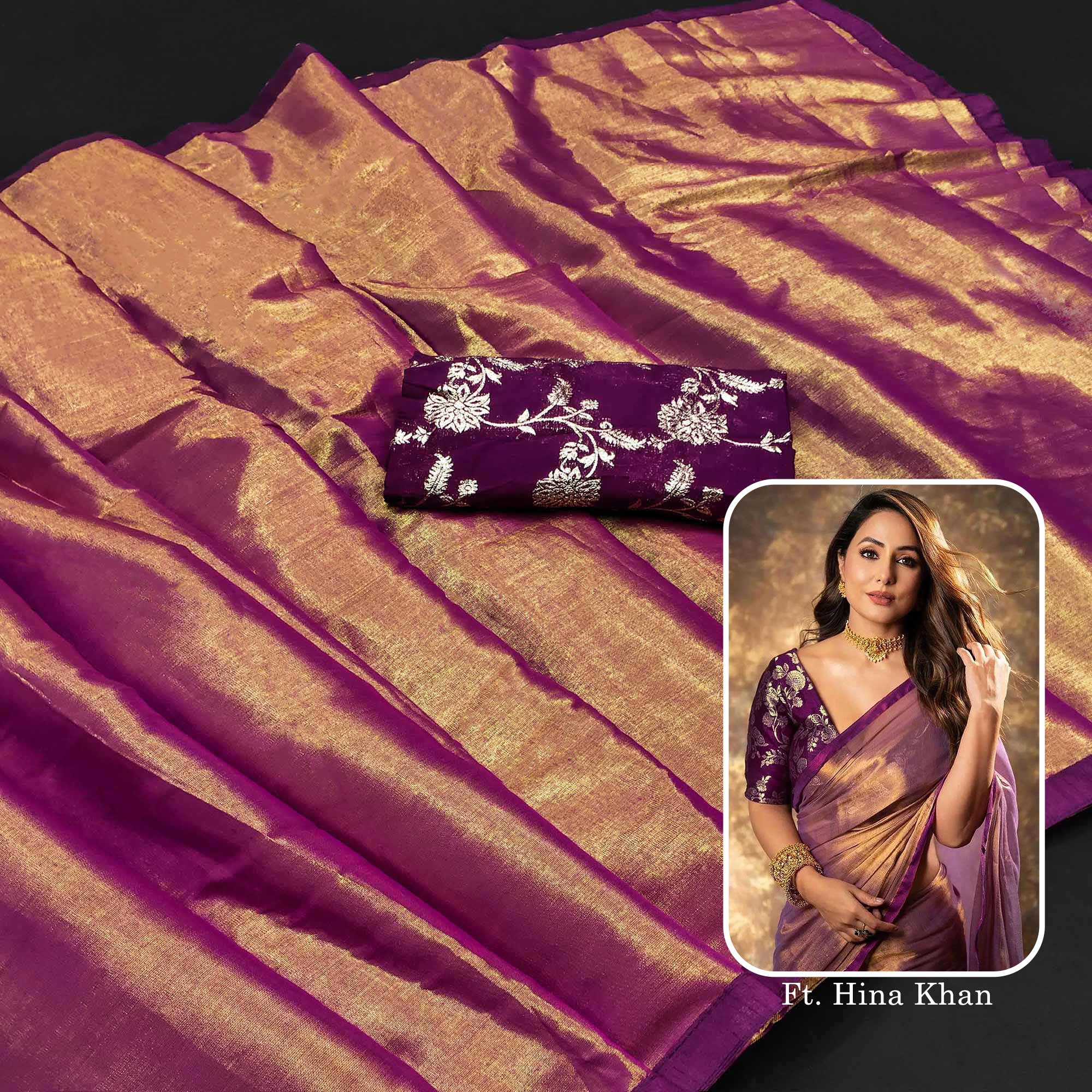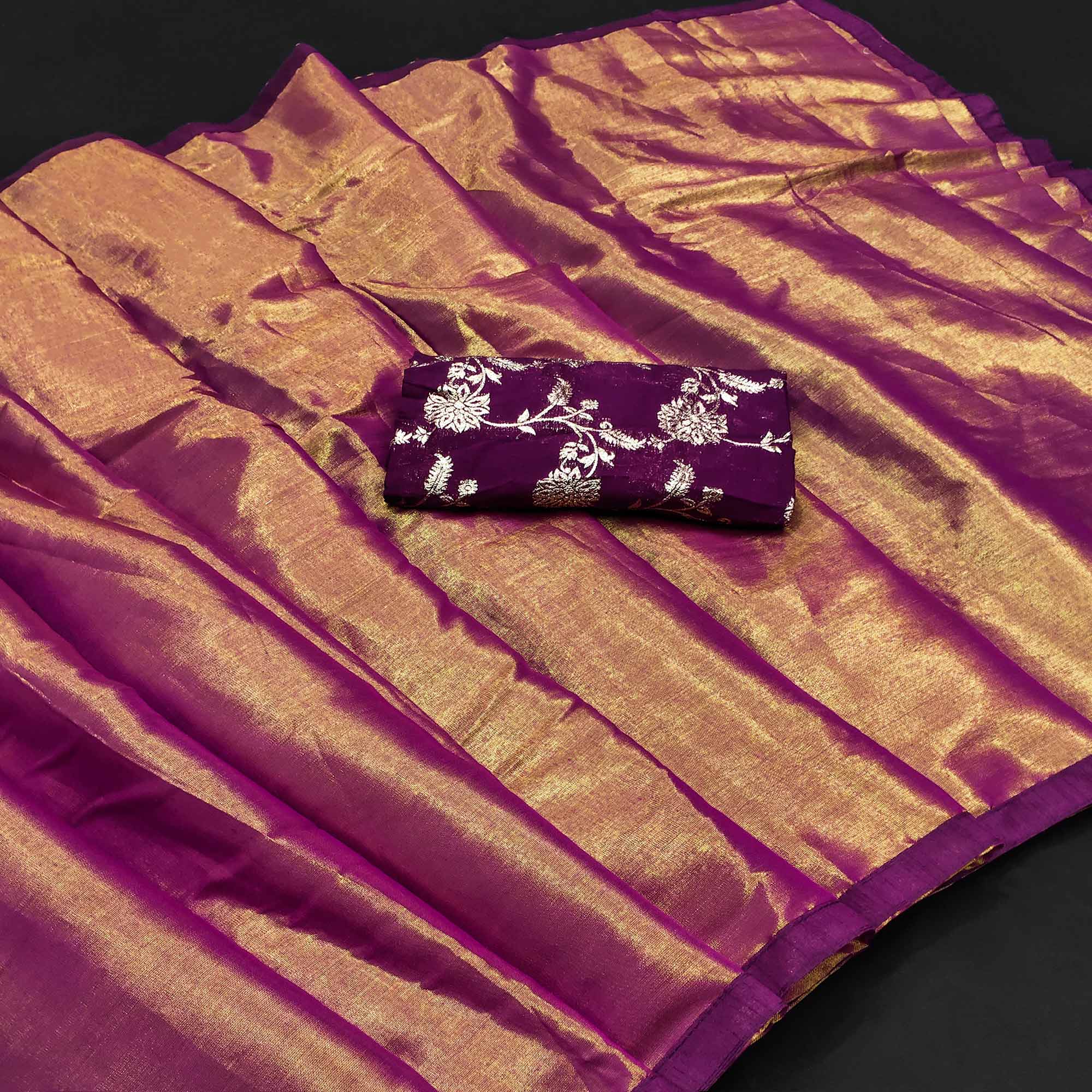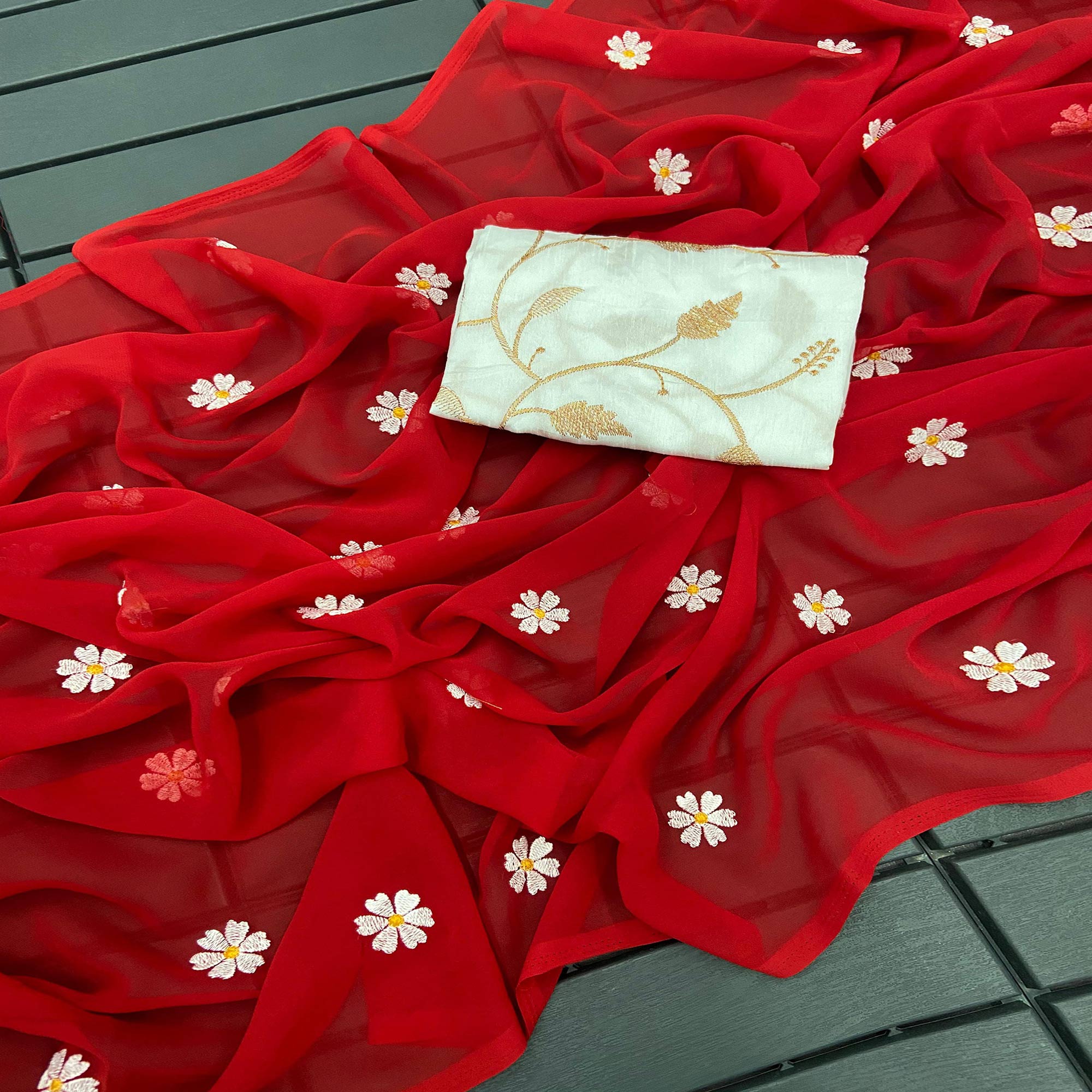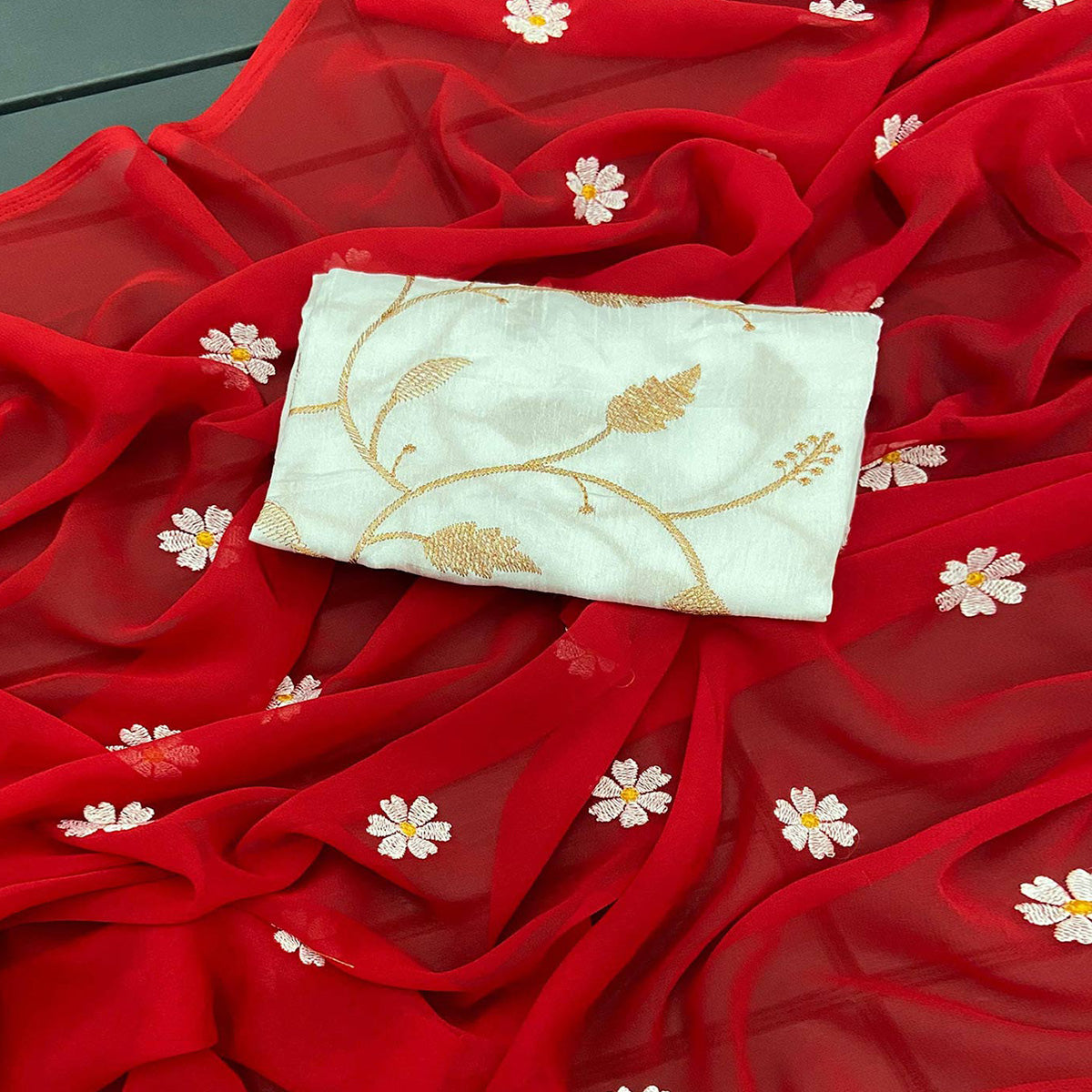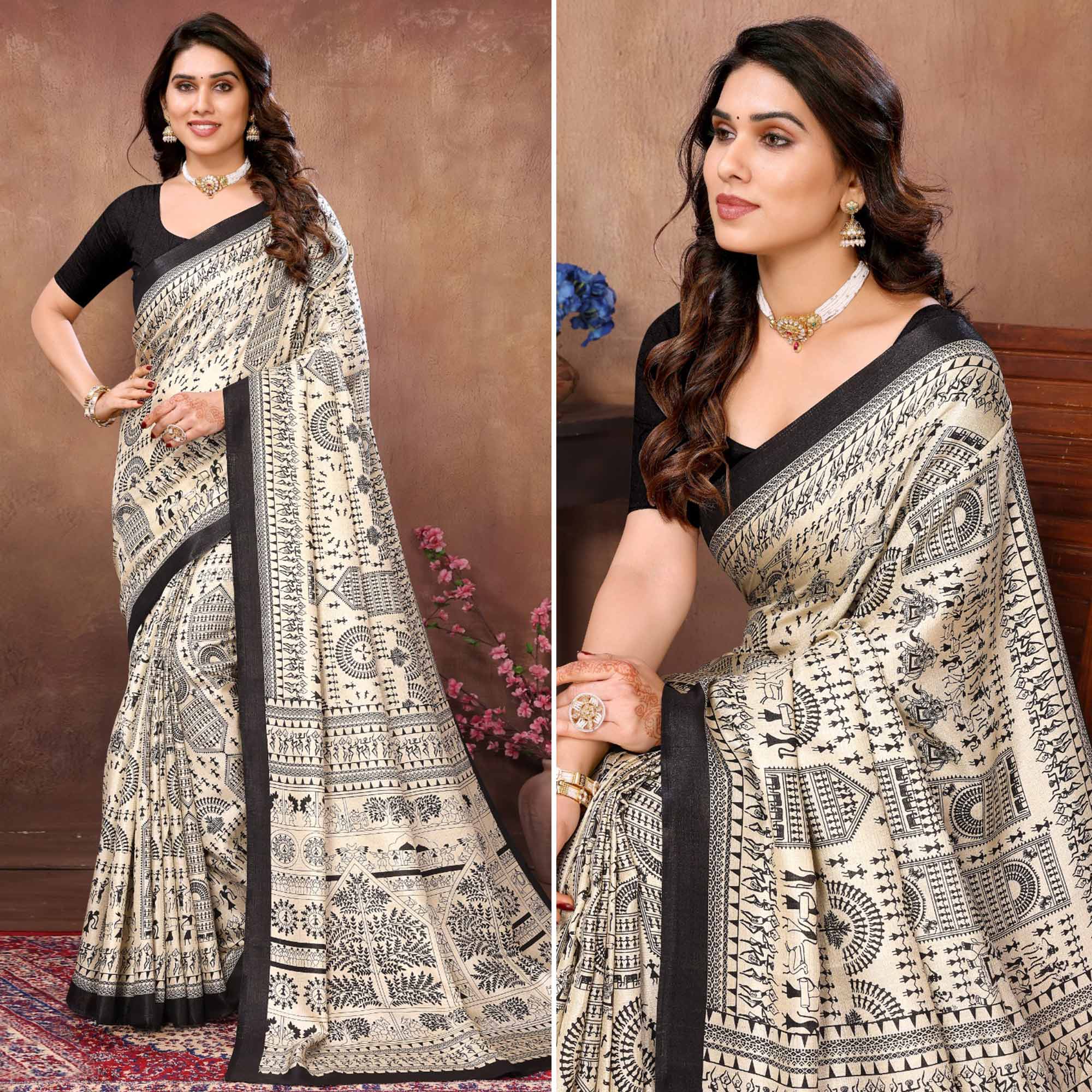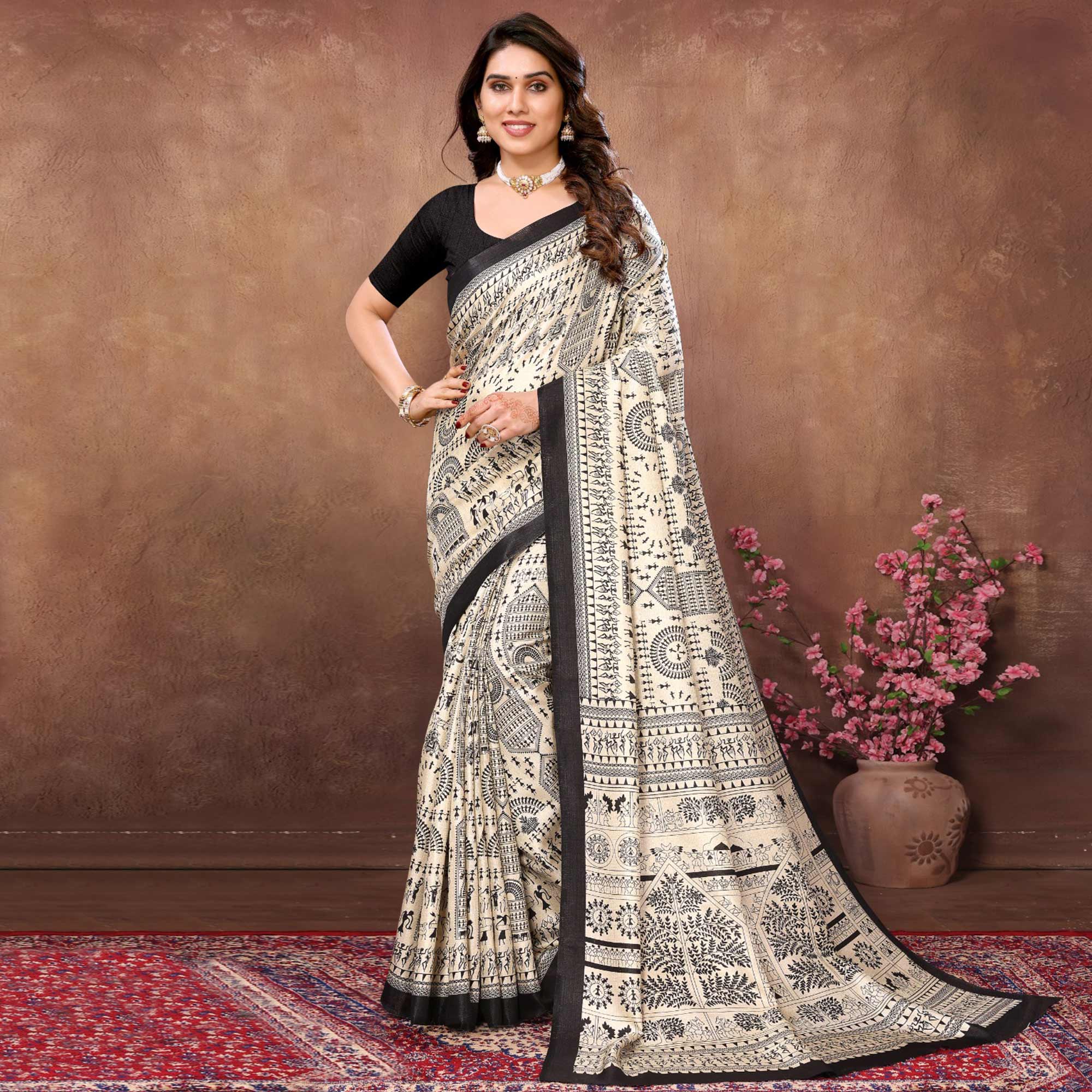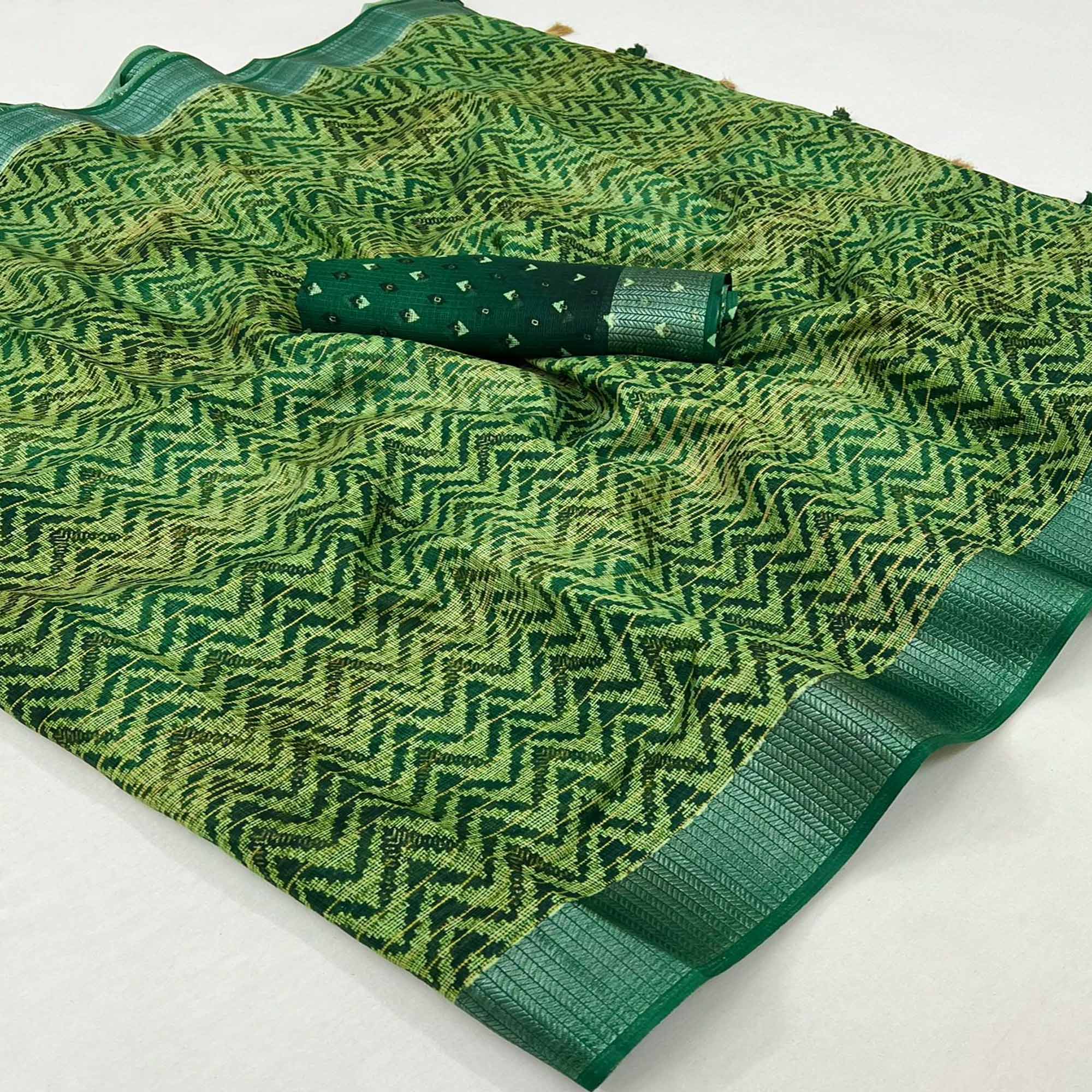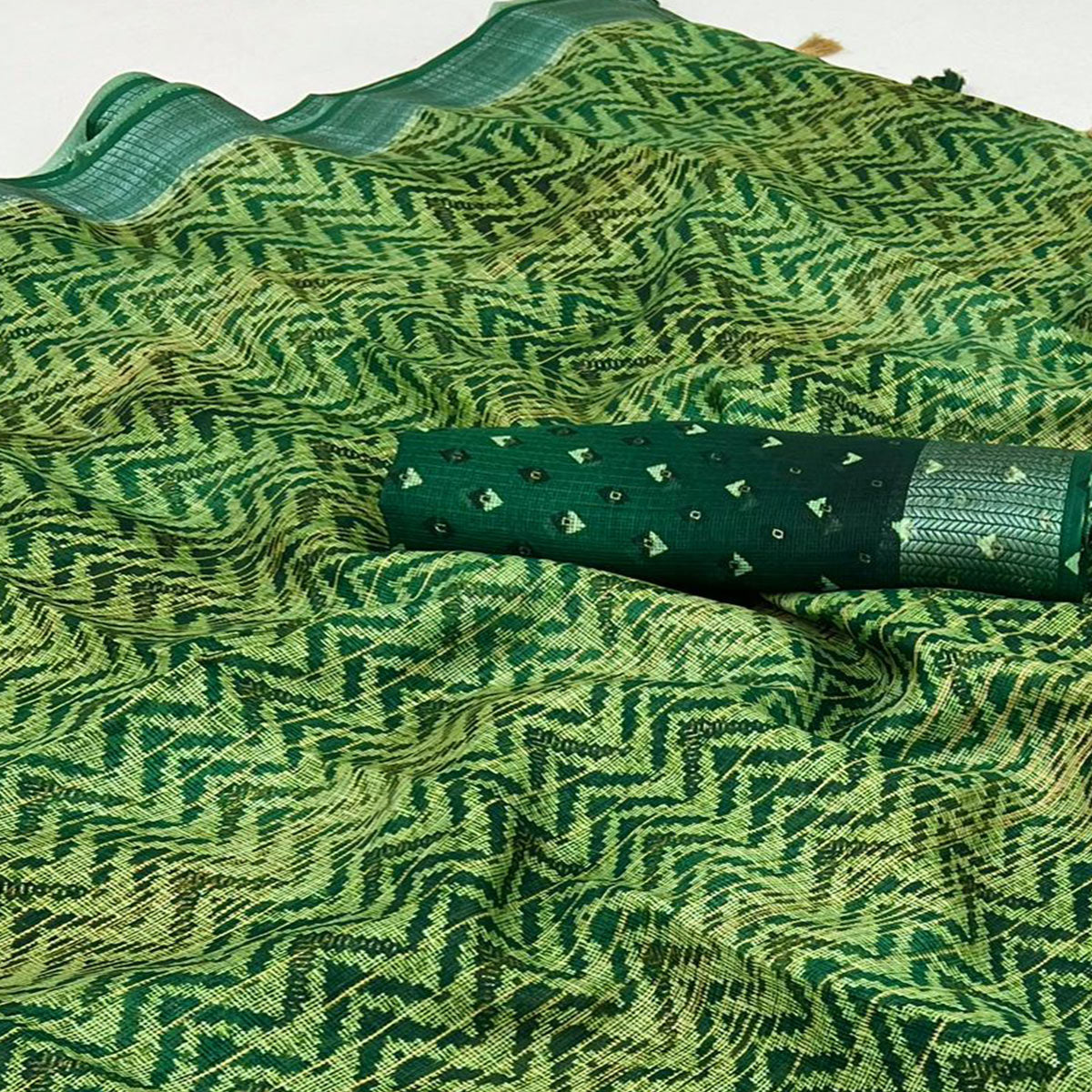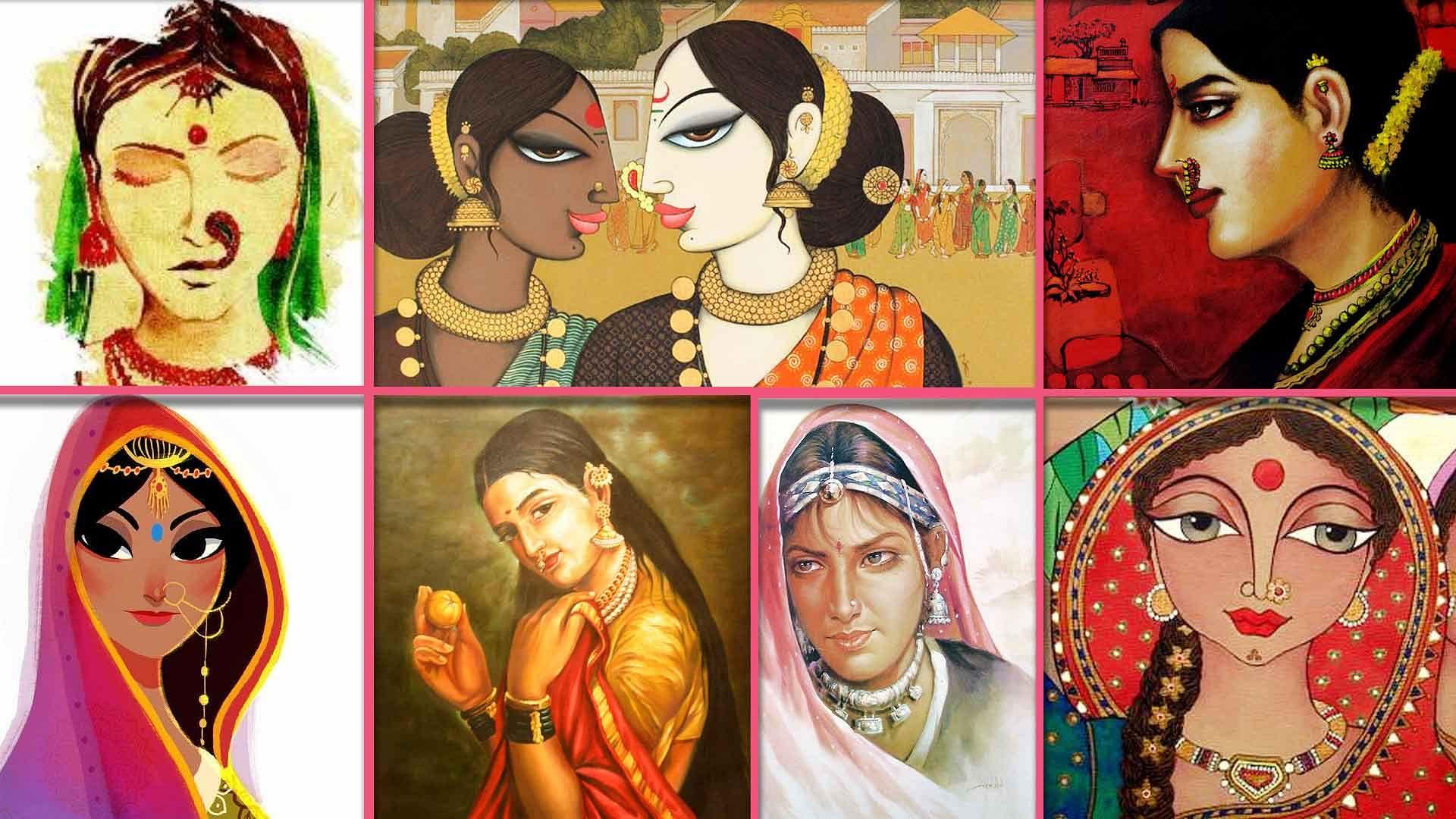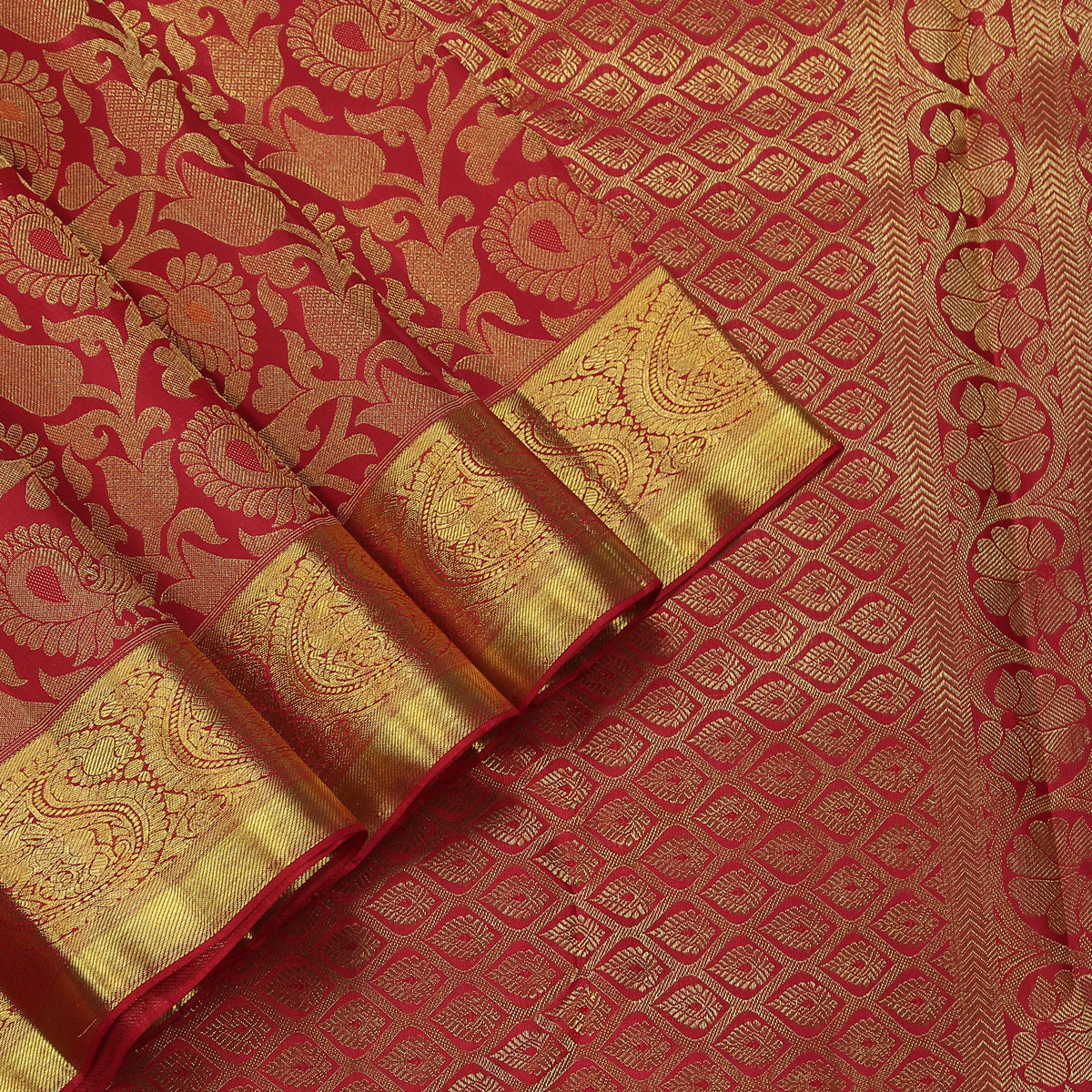Pottery is one of the most valued and oldest forms of regional art in India. Not only is it of great cultural importance to India, it also speaks of the humongous talent that our ancient civilisations possessed. It is amongst the most iconic craftsmanship forms in India.
Pottery is basically the art of moulding materials usually made out of non-metallic minerals into objects. The moulding is done when the material is wet and is often fired to give it a good finishing.
Historic Narration
The first ever recorded mention of pottery in India dates back to 3000BC in the pre-Harappan times. Indian pottery came in foreground with Indus Valley Civilisation where the people used to bake and shape clay into vessels and that eventually took the name of pottery making.
Indian pottery started as both handmade and wheel-made.
Journey Through Centuries
Neolithic age
This is the first and foremost known era of pottery making. Handmade pottery was the only form known that time. The pottery during this time was conventionally unglazed one and was very simple with no carvings on it. The pots made were used majorly for storage purposes only. The vessels were coarse to touch and were made out of sand or mixtures of sand mixed with clay.
Chalcolithic or The Metal Age
This period saw the introduction of metals and the pottery too evolved from its native form. Eastern Rajasthan came up with Black and Red ware pottery. Maharashtra came up with pottery with a matte surface. The regions around Ganga region made pottery known as the Copper Hoard Culture which was orange-ish red in color and dates back between 2000BC and 1500 BC
Harappan Civilisation
The Harappan Civilisation brought about wheel-made pottery. The people during this period also began the concept of polished pottery which was fired and glazed and looked fine finished.
It was also during this phase that geometric and floral patterns found their way on the surfaces of the vessels.
A special kind of pottery vessel was made during this time for storing and serving liquor.
Black colored pottery and painted grey pottery were also widely made during the Harappan times.
Vedic Period
Archaeologists have found ample evidence of intricately designed grey pottery at the Vedic sites proving their existence during that period. These were found mostly around Mathura region.
Later on as the Vedic period progressed, various other forms of pottery came in to making. Glossy, shiny pottery popularized. A special kind of pottery called deluxe pottery was crafted which was meant only for the elite and the upper class.
Single-colored black pots, made through monochrome pottery on pot-wheel were very much the rage during that time and two-colored pottery also was introduced though that didn’t gain much appreciation. Both of these were found along Madhya Pradesh and Uttar Pradesh regions.
Unglazed Pottery
Unglazed pottery constitutes the finest form of pottery in India. To put it simply, unglazed pottery basically goes through only firing and is not further coated with a vitreous substance. This is basically of three types, all of which are done beautifully in India.
Paper-Thin Pottery, where the pottery is biscuit colored and has incised patterns. Kanpur in Uttar Pradesh specialises in this. Then is the Scrafito Technique, where the pot is polished and filled with intricate designs on painted red and white stripes.

Glazed Pottery
This form of pottery flourished during the invasion and rule of Arabs and Mughals in India around the 12th century. In order to have more of their tribe settle in India and populate the land, the Mughals encouraged potters from Middle East to move to India and earn a livelihood here.
Rampur and Chunar in Uttar Pradesh and Karigari in Tamil Nadu are famous for their glazed pottery skills.
Blue Pottery
Although Turko-Persian in origin, blue pottery is widely identified as a native craft of Jaipur. A type of glazed pottery, this is low fired without any clay used.
It is believed that early in the 19th century, the king of Jaipur took a fancy for this pottery and had craftsmen brought in from Delhi to train the local artisans in it. Just after independence, blue pottery was almost an extinct art there before it was revived by Rajmata Gayatri Devi.

The very artistic Rambagh Palace of Jaipur has some ornately done ceramics in blue pottery. Today, this art draws millions of foreigners from the world over and also employs numerous talented local artisans.
Other than Jaipur, Delhi and Khurja too excel in Blue Pottery.
Terracotta Pottery
Giving off the look of clay, this earthenware can be both glazed and unglazed. The terracotta toys of the rural India abound in spectacular artistic beauty. They are made with sheer perfection and are minutely detailed in their carving and moulds.
The terracotta pottery in villages also abounds in tiny figures of go0ds and goddesses that are placed under trees and small temples of the villages.

Gorakhpur specializes in terracotta animal toys. Here, each part of the toy is first moulded separately and then put together on the wheel by the specialised potters of the area.
Gujarat and Rajasthan specialise in terracotta figures that are used for decoration. In interiors of Rajasthan, the artisans mould together figures of clay on flat surfaces and then paint them in alluring designs.
The Tanjore dolls are another fine form of the terracotta pottery.
Other Fine Forms of Pottery
Alwar in Rajasthan is known for a similar version of the paper-thin pottery called Kagzi which is gilded with tasteful pictorials. Kangra in Himachal Pradesh dabbles in a very artful pottery called black pottery that is very similar to the ancient and first Harappan pottery.

Meerut and Jhajjar are famous for their surahis- the slim tall necked water containers. Kutch in Gujarat is famous for its terracotta horses and elephants. Nizamabad in Uttar Pradesh is famous for its black pottery with silver carvings on it.
Papier mache is another brilliant craft of pottery that is done on wood pulp. Srinagar in India designs beautiful papier mache artefacts.
India Pottery Industry
The pottery industry in India is responsible for giving dedicated employment and wages to numerous citizens. India is one of the major manufacturers and exporters of pottery products worldwide. Khurja units of Uttar Pradesh produce the majority of pottery in India with sales running up to 85 crores annually. Around 20% of the pottery produced natively is exported every year to the global market.
Indian pottery is a powerhouse of the immense talent and creativity that our artisans showcase. A global attraction, this art form is not only a means of livelihood for many but also a legacy that has passed down from generations and holds great sentimental value that speaks of the country’s unparalleled rich culture. It directly reflects upon our ancient culture and how it evolved over these centuries. Interestingly, there is a dedicated field of pottery study which comes in real handy when trying to decipher tribes and cults which have no remnants of scriptures or any documents on evidence.

